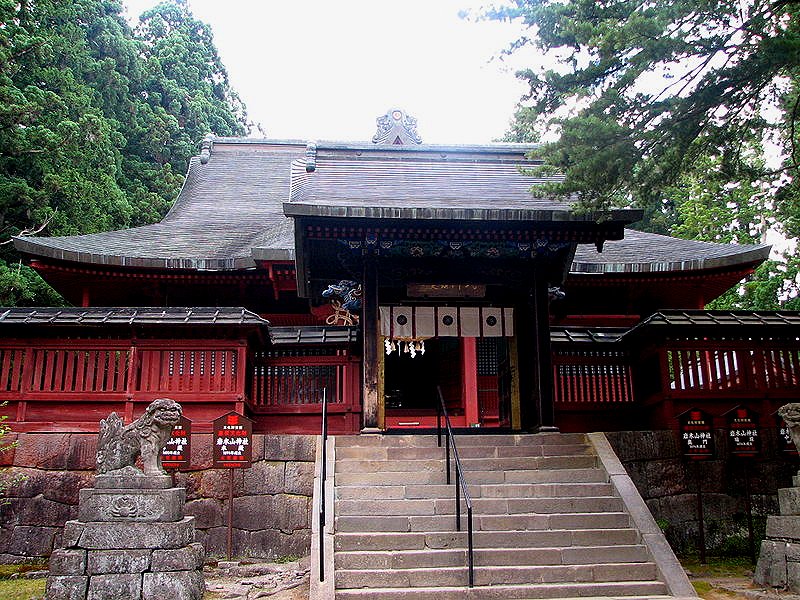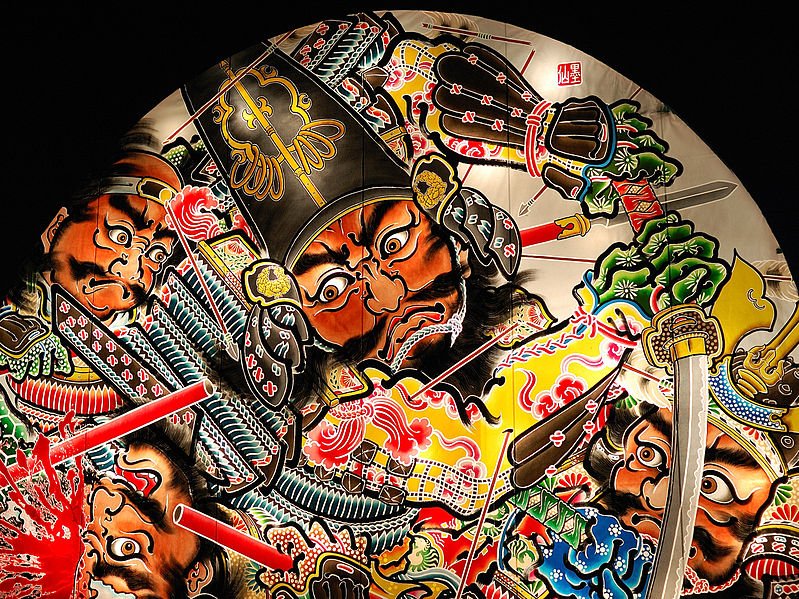Hirosaki (Japanese: 弘前市) is a city on the southwestern part of Aomori Prefecture, in northern Honshu, Japan. It covers 524 sq km (202 sq mi) and has a population of 181,000 people (2012 estimate). Hirosaki is known in Japan as the "Apple Colored Town". This is because it is the biggest producer of the fruit in the country, accounting for 20% of Japan's apple production. The history of apple cultivation here goes back to 1877.
Hirosaki was given city status on 1 April, 1889, becoming one of the first 30 cities to be established in Japan. It expanded to annex the villages of Shimizu, Wattoku, Toyoda, Horikoshi, Chitose, Fujishiro, Niina, Funazawa, Takasugi, Susuno and Higashimeya in 1955, and the village of Ishikawa in 1957.
 Iwakiyama Shrine in Hirosaki, Aomori Prefecture, Japan
Iwakiyama Shrine in Hirosaki, Aomori Prefecture, JapanSource: http://commons.wikimedia.org/wiki/File:Iwakiyama_Shrine_haiden2.jpeg
Author: nnh

Author: nnh

Planning your trip to Hirosaki
If visiting Hirosaki by car, you can take the Tohoku Expressway or Japan National Routes 7 and 102.You can take the Ou Main Line of the East japan Railway to the Ishikawa, Hirosaki, Naijoshi, Daishaka or Namioka stations, the Konan Line to the Hirosaki, Hirosaki-Higashikomae, Undokoenmae and Nisato stations, or the Owani Line of Konan Railway to the Chuo-Hirosaki, Hirokoshita, Hirosaki Gakuindai-mae, Chitose, Koguriyama, Matsukitai, Tsugaru-Osawa, Gijukukokomae, Ishikawa and Ishikawa-Poolmae stations.
 The Ogi-Neputa float during the Neputa Festival in Hirosaki, Japan
The Ogi-Neputa float during the Neputa Festival in Hirosaki, JapanSource: http://commons.wikimedia.org/wiki/File:%C5%8Cgi_Neputa.jpg
Author: Rosino

Author: Rosino

Places of Interest in Hirosaki
- Chosho-ji Temple
- Hirosaki Castle
- Iwakiyama Shrine
- Nakamachi Bukeyashiki
- Saisho-in Temple
 Latest updates on Penang Travel Tips
Latest updates on Penang Travel Tips
 Map of Roads in Penang
Map of Roads in Penang
Looking for information on Penang? Use this Map of Roads in Penang to zoom in on information about Penang, brought to you road by road.
Copyright © 2003-2025 Timothy Tye. All Rights Reserved.

 Go Back
Go Back